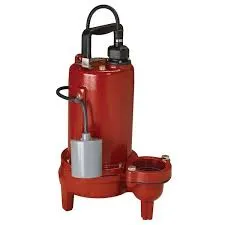English
- Afrikaans
- Albanian
- Amharic
- Arabic
- Armenian
- Azerbaijani
- Basque
- Belarusian
- Bengali
- Bosnian
- Bulgarian
- Catalan
- Cebuano
- Corsican
- Croatian
- Czech
- Danish
- Dutch
- English
- Esperanto
- Estonian
- Finnish
- French
- Frisian
- Galician
- Georgian
- German
- Greek
- Gujarati
- Haitian Creole
- hausa
- hawaiian
- Hebrew
- Hindi
- Miao
- Hungarian
- Icelandic
- igbo
- Indonesian
- irish
- Italian
- Japanese
- Javanese
- Kannada
- kazakh
- Khmer
- Rwandese
- Korean
- Kurdish
- Kyrgyz
- Lao
- Latin
- Latvian
- Lithuanian
- Luxembourgish
- Macedonian
- Malgashi
- Malay
- Malayalam
- Maltese
- Maori
- Marathi
- Mongolian
- Myanmar
- Nepali
- Norwegian
- Norwegian
- Occitan
- Pashto
- Persian
- Polish
- Portuguese
- Punjabi
- Romanian
- Russian
- Samoan
- Scottish Gaelic
- Serbian
- Sesotho
- Shona
- Sindhi
- Sinhala
- Slovak
- Slovenian
- Somali
- Spanish
- Sundanese
- Swahili
- Swedish
- Tagalog
- Tajik
- Tamil
- Tatar
- Telugu
- Thai
- Turkish
- Turkmen
- Ukrainian
- Urdu
- Uighur
- Uzbek
- Vietnamese
- Welsh
- Bantu
- Yiddish
- Yoruba
- Zulu
Telephone: +86 13120555503
Email: frank@cypump.com
Oct . 13, 2024 20:12 Back to list
Guide to Efficient Slurry Pumping Techniques and Best Practices for Industrial Applications
Understanding Slurry Pumping A Comprehensive Guide
Slurry pumping is a critical operation in various industrial processes, including mining, wastewater treatment, and chemical manufacturing. Slurries are mixtures of solids and liquids, typically water, and they pose unique challenges and requirements compared to pumping clean fluids. The efficient transport of slurries is essential for the overall productivity and cost-effectiveness of operations. This article aims to provide a comprehensive overview of slurry pumping, including its principles, types of pumps, and important considerations.
Fundamentals of Slurry Pumping
Slurry pumping involves the movement of a suspension of solids in a liquid medium. The properties of the slurry—such as density, viscosity, particle size, and shape—can significantly affect the choice of pump and its operational efficiency. Understanding these properties is crucial for effective pump selection and system design.
Types of Slurry Pumps
There are several types of pumps used for slurry applications, each designed to handle specific challenges associated with slurries
1. Centrifugal Pumps These are the most common type of slurry pump. They use a rotating impeller to impart velocity to the slurry, converting this velocity into pressure. They are suitable for low to medium concentration slurries but can struggle with more viscous mixtures or larger particle sizes, which may cause wear and reduce efficiency.
2. Positive Displacement Pumps These pumps are ideal for high viscosity slurries and those with larger particles. They operate by trapping a fixed amount of slurry and forcing it through the discharge. Types of positive displacement pumps include diaphragm pumps and screw pumps. They provide consistent flow irrespective of the system pressure, making them highly reliable.
3. Submersible Pumps Used in applications where the pump needs to be submerged in the slurry, these pumps can efficiently handle heavy and dense mixtures. They are often used in sump applications and are designed to withstand harsh conditions.
slurry pumping manual

Key Considerations in Slurry Pumping
When designing a slurry pumping system, several factors need to be considered
- Pump Selection The choice between centrifugal and positive displacement pumps depends on the slurry’s characteristics. Factors such as solid concentration, particle size, and the presence of corrosive or abrasive materials must be taken into account.
- Wear Resistance Due to the abrasive nature of many slurries, materials used in the construction of pumps and piping systems need to be wear-resistant. Options include high-chrome iron, rubber linings, and composite materials.
- Hydraulic Design The hydraulic design of the pumping system is crucial for optimizing efficiency. This includes the design of pump curves and understanding the specific speed required to achieve the desired flow rates and pressures while minimizing energy consumption.
- Slurry Transportation The pipeline design, including diameter and length, significantly affects the efficiency of slurry transport. Factors such as friction losses, flow regime, and sedimentation potential must be carefully analyzed to ensure smooth and efficient operation.
- Maintenance and Monitoring Regular maintenance is vital for reliable operation. Monitoring systems can provide real-time data on pump performance, helping to predict maintenance needs and prevent unexpected failures.
Conclusion
Slurry pumping is a complex yet vital process in many industries. By understanding the fundamental principles of slurry dynamics and the various pump types available, operators can make informed decisions that enhance efficiency and reduce operational costs. As technology advances, the development of more efficient and durable slurry pumping solutions continues to be a key focus for manufacturers and users alike, ensuring that industries can effectively transport and manage slurry materials with confidence. Through careful planning and attention to detail, the challenges of slurry pumping can be managed efficiently, contributing to the overall success of industrial operations.
-
ISG Series Vertical Pipeline Pump - Chi Yuan Pumps Co., LTD.|Advanced Hydraulic Design&Energy-Efficient Solutions
NewsJul.30,2025
-
ISG Series Vertical Pipeline Pump - Chi Yuan Pumps Co., LTD.
NewsJul.30,2025
-
ISG Series Vertical Pipeline Pump - Chi Yuan Pumps Co., LTD.|energy-efficient fluid handling&industrial durability
NewsJul.30,2025
-
ISG Series Vertical Pipeline Pump - Chi Yuan Pumps | Advanced Engineering&Industrial Efficiency
NewsJul.30,2025
-
ISG Series Pipeline Pump - Chi Yuan Pumps | High Efficiency, Energy Saving
NewsJul.30,2025
-
ISG Series Vertical Pipeline Pump-Chi Yuan Pumps|High Efficiency&Reliable Performance
NewsJul.29,2025










